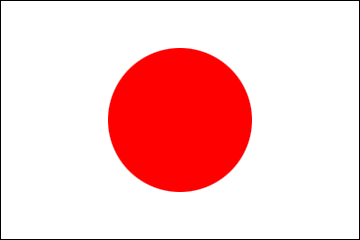IKEBANA INTERNATIONAL SRI LANKA CHAPTER 262
2019/9/21
Ambassador's Speech
Ms Baddrika Mendis, President of Ikebana International Sri Lanka Chapter 262
Mr. Christopher Lim, RIJI, Advisor and Mentor of Ikebana International Sri Lanka,
Distinguished Members and Guests,
Ladies and Gentlemen,
Good morning.
It gives me great pleasure to say a few words on this auspicious opening ceremony this morning. This is my first opportunity to attend the annual exhibition and demonstration of Ikebana International Sri Lanka Chapter 262, which marks 11th anniversary this year, and I am so delighted to learn, as one of the Japanese nationals residing in Sri Lanka, that the art of Ikebana has taken firm roots in Sri Lanka, blending exotically with tropical flowers that are indigenous to this beautiful island.
Ladies and Gentlemen,
Flowers are our constant friends in joy and sadness, and its language is universal whose essence is to give “hope” in our daily lives. “Blossom of Hope”, the title of this exhibition, accurately captures such subtle power and promises that this silent companion of ours is endowed with, and among countless verses and proses written on flowers, I would like to quote one from Tenshin Okakura, a great philosopher of Meiji Era, who illustrated the inner power of flowers in the following passage:
“What solace do they not bring to the bedside of the sick?
What a light of bliss do they not bring to the darkness of weary spirits?
Their serene tenderness restores us our waning confidence,
Just as the intent gaze of a beautiful child recalls our lost hopes.”
It is by way of this profound admiration for the tranquility and purity of flowers that the subtle and poised beauty of art of Ikebana made unique development.
Distinguished Guests,
The Japanese people’s delicate sense of art stems from living in “harmony and order” with the rhythm of the nature, which is exercised through the inner practice of Zennism, reflected in the floral art of Ikebana as well. Indeed, the birth of Ikebana can be traced back to early Buddhist saints in the fifteenth century, who, as legends say, “gathered the flowers strewn by the storm and placed them in vessels of water”. Thereafter, alongside the perfecting of the tea-ritual in the sixteenth century, the art of Ikebana also attained its full growth, while developing into a core symbol of the Japanese culture.
Today, there are thousands of different schools of Ikebana all over the world. Sogetsu School, with which Ikebana International is affiliated, is one of the main branches of Ikebana Schools, featuring in the innovative creativeness of the practitioners. I believe that it is this tolerance to the style of Sogetsu School that has liberated the free imagination of Sri Lankan flower lovers, culminating in “the blossom of colors and shades” in beautiful symphony.
Distinguished Members,
I have also learnt that activities of Ikebana International Sri Lanka do not limit themselves to the practicing of flower arrangements but extend further to the domain of social services as well. I would like to pay my deepest respect to the dedication of the members to raising fund for the cancer patients, including this exhibition, which has been organized in aid of children with cancer. With this dedication, “Blossom of Hope” begins to cast a different tone of message -a message of sincere prayer-.
Last but not least, I would like to take this opportunity to express my heartfelt appreciation to Mrs. Baddrika Mendis and the members of Ikebana International Sri Lanka Chapter 262, as well as Master Christopher Lim Riji, for nourishing the bond of friendship between Sri Lanka and Japan by maintaining and developing this beautiful Japanese art of Ikebana for more than a decade. It is our common aspirations to see a greater number of people share the joy of Ikebana to feel the “art of living with nature”, while promoting peace and harmony of the world through feeling the subtle power of “hope” that flowers bring in.
On this note and my best wishes for the very success of this exhibition and demonstration, I would like to close my congratulatory remarks.
Thank you very much.
